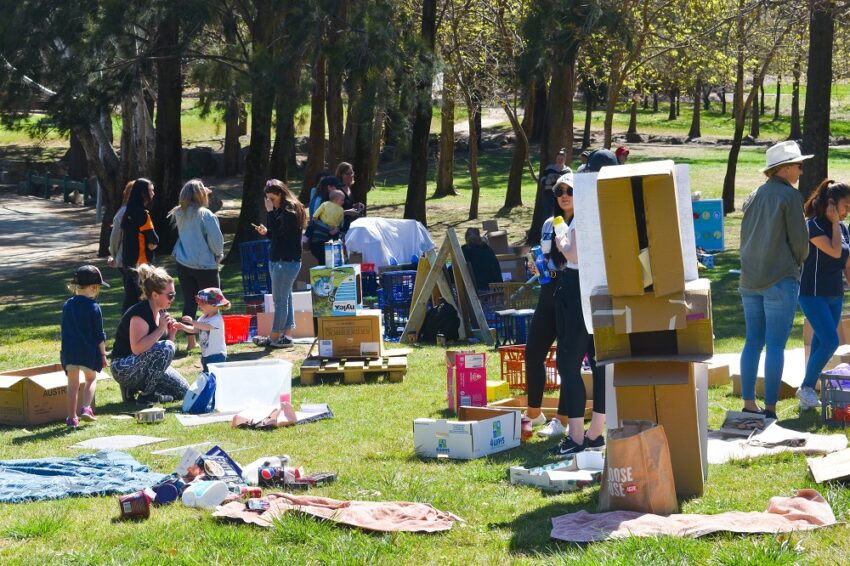UC early childhood students run loose parts pop-up playground

In a bid to embed practical skills into theoretical course work, close to 30 students from the University of Canberra (UC) swapped the classroom for the outdoors recently, to run a loose parts pop-up playground for the local community.
The pop-up playground at John Knight Park in Belconnen was organised and facilitated by the students, for children aged four to eight, as part of their course work for the Philosophies and Pedagogies in Early Childhood Education unit.
Student Tegan Lorkovic explained the connection to the pop-up playground, loose parts play, and an assessment task set for the students about the involvement of adults in children’s play.
Loose parts play, a concept originating in Denmark, involves providing children with equipment and resources that don’t have a specific purpose, while not giving any instructions on how the resources should be used. Consisting of both natural and man-made materials, loose parts play supports children’s creativity, divergent thinking and problem solving.
“A cardboard box is one of the best things that you could give to a child to play with, because they can do so much with it,” said Ms Lorkovic.
“They can paint it, tape it, cut it, or build a house out of it. It is an equipment of play that has no guidelines.”
Dr Kym Simoncini, Associate Professor of Early Childhood and Primary Education at the University, said the project gave educators the opportunity to advocate for why play is important, and demonstrate how easily it can be facilitated without expensive toys.
“Just let the children play, give them time and space and you will see that they are capable of using their imagination with milk crates and sticks,” Dr Simoncini said.
Despite the best intentions of the students, Ms Lorkovic said it was interesting to see how parents and guardians engaged with the children and led them to make decisions they thought were best.
“The whole point of this experience was so the parents didn’t do that. The children can lead their play and create their own experience.”
Over the years of conducting this exercise with her students, Dr Simoncini has noticed how much it benefits not only children, but the students as well.
“Students hadn’t really appreciated loose parts play, before creating the pop-up playground, they thought it was just junk,” said Dr Simoncini.
“But after facilitating the playground, students realised that the children were using problem-solving skills, were working with others and using language, creativity and imagination.”
More information about the value of loose parts play is available here, along with information about establishing loose parts play in early childhood and outside school hours care contexts.
Popular

Practice
Quality
Workforce
Macquarie University expands pathways to early childhood teaching with new StepAhead program
2025-11-18 07:00:26
by Fiona Alston

Workforce
Quality
Applications open for $40,000 Commonwealth teaching scholarships in 2026
2025-11-18 07:15:47
by Fiona Alston

Provider
Practice
Quality
Workforce
Rise & Shine Kindergarten honoured with NSW Teachers’ Guild Award for Exceptional Teaching
2025-11-17 07:30:38
by Fiona Alston















